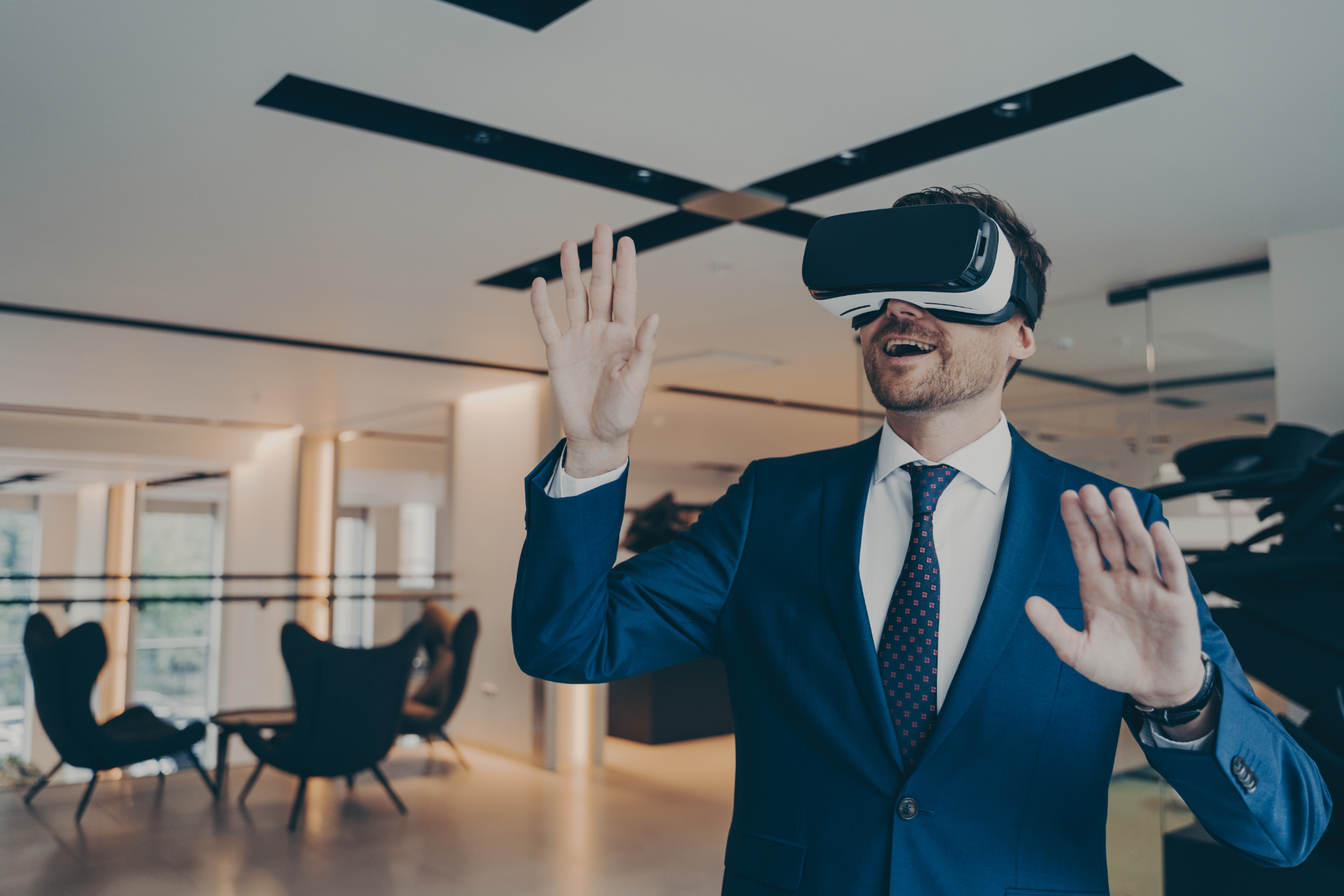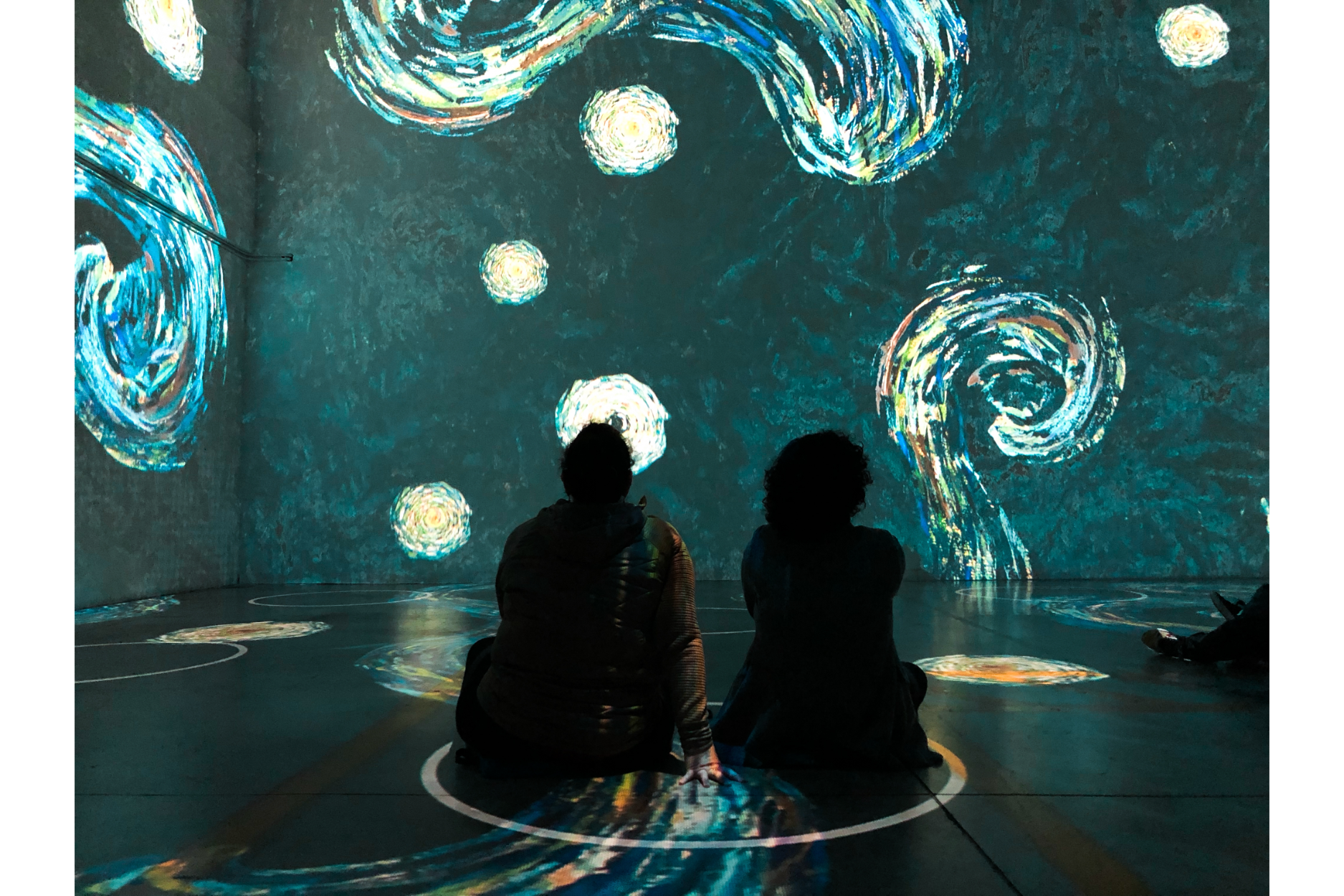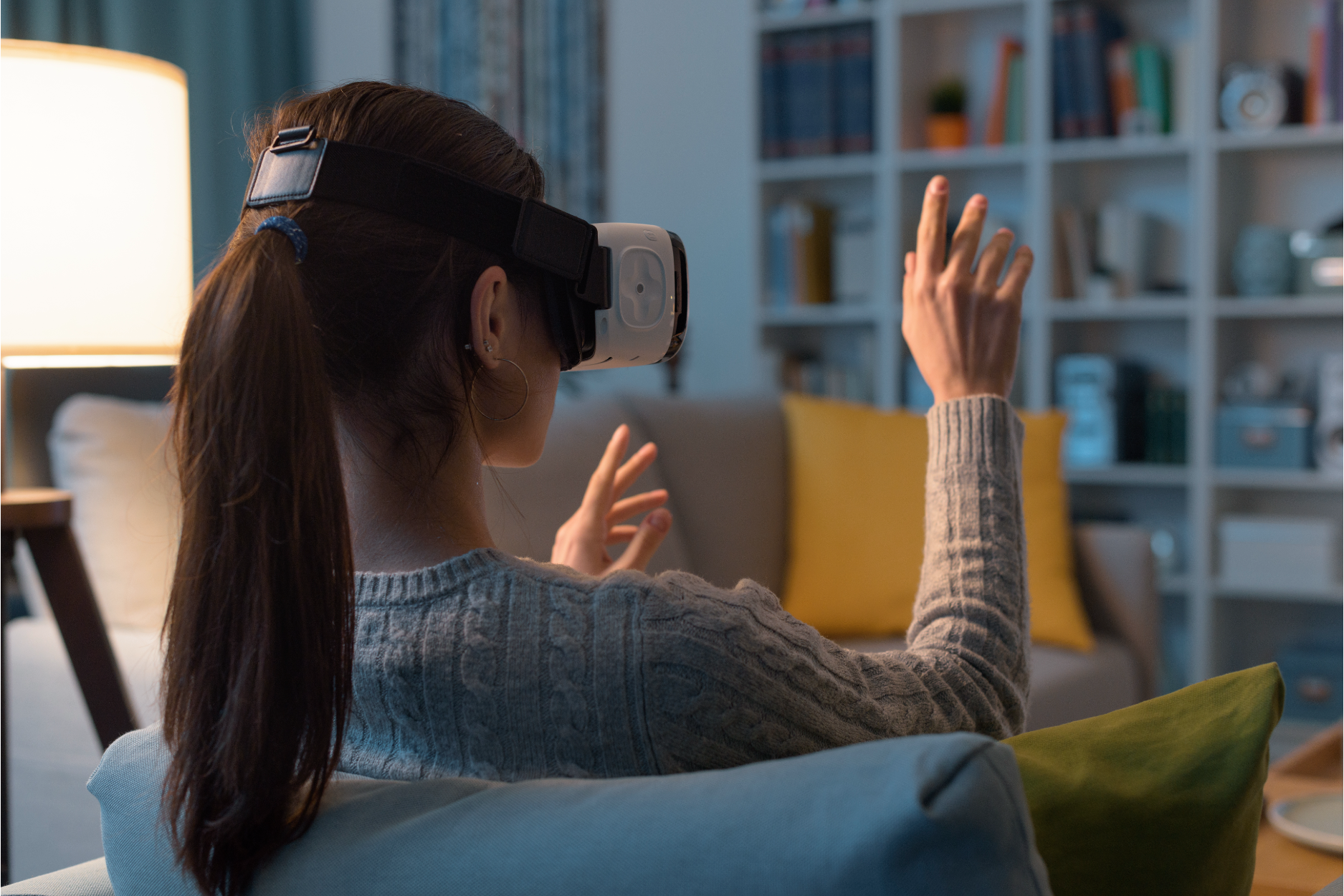
In the ever-evolving realm of immersive technologies, the competition between Parallel Reality and Virtual Reality (VR) has ignited a wave of innovation. These two cutting-edge approaches are shaping how we interact with digital content, altering the way we perceive reality.
In this blog, we'll delve into the distinctive features of Parallel Reality and VR, highlighting their unique characteristics and exploring their applications. Join us on this journey to understand the dynamics of these immersive realms and their role in shaping the future of experiences.

In the ever-evolving landscape of immersive technology, Parallel Reality and Virtual Reality (VR) have emerged as captivating contenders, reshaping the way we perceive and interact with the digital world. As these two distinct approaches gain momentum, it's essential to delve into their fundamental concepts and gain insights into their unique characteristics.
Imagine a realm where the boundaries between the physical and the virtual seamlessly blur. Parallel Reality takes a revolutionary step by intertwining the digital with the tangible, enhancing our real-world experiences rather than isolating us from them. By augmenting our environment with virtual elements, this emerging technology offers an innovative way to engage with information, entertainment, and commerce.
On the other hand, Virtual Reality propels us into entirely fabricated digital worlds, often through specialized headsets that block out the physical surroundings. VR offers an immersive escape, creating simulated environments where users can interact with the virtual universe while remaining physically detached from their immediate surroundings.
In this exploration of Parallel Reality and VR, we embark on a journey to uncover the nuances of their designs and functionalities. From seamless integration with reality to full immersion into fabricated realms, each approach offers a unique gateway to the future of immersive experiences. Join us as we delve deeper into their distinctive attributes, examining how they impact user engagement, interaction, and the way we navigate the digital domain.
In the realm of immersive experiences, the nature of the environments offered by Parallel Reality and Virtual Reality (VR) marks a significant departure from one another. While both technologies aim to captivate and transport users, their fundamental approaches to constructing these environments showcase striking differences.
At the heart of Parallel Reality lies a groundbreaking concept – the seamless blending of real-world surroundings with digitally enhanced elements. Imagine standing in an airport terminal, gazing at a shared display, and witnessing diverse information tailored to each traveler without the need for individual screens. This is Parallel Reality at work, where multiple users coexist within the same space while experiencing personalized content.
Parallel Reality leverages advanced technologies such as spatial computing and computer vision to track individual perspectives and deliver custom content overlays. By weaving digital layers into the fabric of our surroundings, this approach augments our perception without removing us from the tangible environment. The result is a harmonious fusion of the real and the virtual, unlocking new possibilities for information dissemination, wayfinding, and interactive experiences.
In contrast, Virtual Reality transports users to fully digital realms that are separate from the physical world. Equipped with VR headsets, users are enveloped in immersive simulations that replace their actual environment with a fabricated one. From traversing fantastical landscapes to engaging in otherworldly adventures, VR provides an escape from reality into boundless digital horizons.
The creation of VR environments demands meticulous design and programming to construct convincing and engaging virtual spaces. Users are free to interact with, explore, and manipulate objects within these digital constructs, albeit without direct interaction with the physical world they inhabit.
In this exploration of nature, Parallel Reality innovates by weaving virtual elements into the fabric of our immediate surroundings, promoting interaction with the real world. VR, on the other hand, crafts entirely digital universes that users can venture into. Both approaches offer unique avenues for immersive experiences, inviting users to choose between a blend of realities or a complete departure from the tangible domain.
User experience and interaction form the very core of how we engage with immersive technologies like Parallel Reality and Virtual Reality (VR). These two approaches, while fundamentally distinct, offer contrasting ways for users to interact with the digital realm and their physical surroundings.
Stepping into the world of VR is often synonymous with stepping away from the real world. VR headsets create an all-encompassing digital environment, temporarily isolating users from their immediate surroundings. While users are immersed in captivating digital landscapes, they remain physically disconnected from the real world. The engagement is primarily visual and auditory, with limited interaction with tangible elements.
The VR experience is best suited for scenarios where complete immersion and detachment from reality are desired. Gaming, simulations, and training applications benefit from this approach, as users can focus solely on the virtual experience without distraction.
Parallel Reality takes a distinctive approach, enhancing the user experience by integrating digital information with the physical environment. Unlike VR's isolation, Parallel Reality enables users to interact with both real and digital elements simultaneously. This innovation allows users to engage with information, entertainment, and commerce in a way that doesn't require detachment from the physical space they inhabit.
Imagine a museum exhibit where visitors can explore historical artifacts while receiving digital information about each item directly on their smartphones. Parallel Reality seamlessly bridges these experiences, providing an avenue for real-time interaction with both tangible objects and digital overlays.
Whether it's navigating an airport with personalized directions or attending a live event with context-aware information, Parallel Reality enhances engagement by allowing users to remain grounded in their immediate environment while accessing digital enhancements.
In this arena of user experience and interaction, VR offers complete immersion in digital realms, while Parallel Reality crafts an experience where real-world interactions are amplified by the addition of digital layers. The choice between isolation and integration depends on the desired context and the goals of the experience, highlighting the dynamic interplay between the real and the virtual.

In the realm of immersive technologies, the level of physical presence and immersion distinguishes the experiences offered by Virtual Reality (VR) and Parallel Reality. These two approaches embody contrasting philosophies, impacting the extent to which users engage with their immediate environment and the digital realm.
VR environments are synonymous with a departure from the physical world. By wearing VR headsets, users isolate themselves from their immediate surroundings, essentially diminishing their physical presence. The headset replaces the user's vision and hearing with digital simulations, creating an illusion of being transported to an entirely different reality.
The minimal physical presence in VR enables deep immersion into digital landscapes and scenarios. Users can explore and interact with the virtual world without distraction from the real environment. This detachment fosters a heightened sense of escapism, which is particularly effective in applications like gaming, simulations, and training.
Parallel Reality, in stark contrast, embraces the physical world and enhances users' connection to it. Instead of isolating users, Parallel Reality augments their surroundings with digital elements, creating an environment where the physical presence remains integral to the experience. Users engage with both real and digital aspects simultaneously, allowing them to navigate and interact seamlessly.
For instance, consider a retail environment where personalized offers and product details are seamlessly displayed on screens as customers move through the store. The enhanced physical presence in Parallel Reality ensures that users remain aware of their surroundings while enjoying the benefits of real-time digital overlays.
This approach prioritizes a harmonious coexistence of real and virtual, making it suitable for contexts where users require continuous interaction with the physical environment while receiving digital enhancements.
In the realm of physical presence and immersion, VR offers a retreat from the physical world, while Parallel Reality embraces it to amplify the user experience. The decision between these two approaches hinges on the desired balance between digital immersion and engagement with the real world, a choice that ultimately shapes the character of the immersive experience.
The diverse applications of immersive technologies like Virtual Reality (VR) and Parallel Reality unveil a world of possibilities that extend beyond mere entertainment. From gaming to data visualization, these approaches redefine how we interact with digital content and the real world, catering to a wide spectrum of industries and experiences.
VR's immersive potential finds resonance across various domains, with gaming leading the charge. Gamers step into alternate realities, participating in adventures that are limited only by their imagination. Beyond gaming, VR simulations offer realistic training experiences for professionals in fields like aviation, healthcare, and military, enhancing skill development and decision-making under various scenarios.
In education, VR transports students to historical events and distant locations, enabling experiential learning. Architects and designers leverage VR to visualize spaces before they are built, allowing clients to walk through projects. These applications demonstrate VR's capacity to create experiential realms that educate, train, and entertain.
Parallel Reality's real-time augmentation of the physical world opens avenues for diverse applications. In retail, dynamic pricing and personalized offers can be displayed to customers as they navigate the store. Airports can provide customized directions to individual travelers without the need for personal screens.
Data visualization in Parallel Reality transforms the way we understand complex information. Imagine a financial analyst exploring market trends projected onto their immediate surroundings. Parallel Reality also enhances navigation, providing intuitive directions in unfamiliar spaces.
This approach caters to industries seeking to integrate digital enhancements with the real world, offering real-time information, context, and interaction without isolating users from their surroundings.
In summary, VR excels in creating immersive simulated experiences across gaming, training, and education. Parallel Reality, on the other hand, amplifies engagement with the physical world through data visualization, navigation, and real-time contextual information. Both technologies extend the boundaries of experience, each catering to different needs and industries, united in their commitment to immersive innovation.
The display devices associated with Virtual Reality (VR) and Parallel Reality offer distinct pathways to immersive experiences. While VR is often associated with specialized headsets, Parallel Reality embraces a wider range of devices, both enhancing accessibility and shaping the nature of interaction.
VR experiences are epitomized by specialized headsets that envelop users in captivating digital realms. These headsets create a sensory cocoon, immersing users in a fabricated environment while isolating them from their physical surroundings. The experience is characterized by its intensity and the exclusivity of the headset's capabilities.
The accessibility of VR experiences relies on the ownership of compatible VR headsets. While this technology has gained popularity, its adoption can be limited by factors such as cost and user comfort.
Parallel Reality redefines the accessibility paradigm by embracing a variety of devices beyond specialized headsets. This approach widens the accessibility spectrum, catering to users with different preferences and devices at their disposal. From smartphones and tablets to augmented reality (AR) glasses, Parallel Reality ensures that immersive experiences are not confined to a single piece of hardware.
Imagine accessing real-time navigation information through your smartphone's camera or receiving personalized offers on AR glasses as you move through a store. Parallel Reality's compatibility with diverse devices promotes greater accessibility and integration into daily routines.
The choice between VR's specialized immersion and Parallel Reality's device diversity depends on the desired level of immersion, the nature of the experience, and the user's comfort with the technology.

In the realm of display devices and accessibility, VR specializes in dedicated headsets that deliver intense immersion, while Parallel Reality expands accessibility by incorporating a range of devices. Both paths cater to diverse user preferences, illustrating the innovation that arises from tailoring experiences to different hardware capabilities.
The clash between Parallel Reality and VR marks an exciting juncture in the evolution of immersive technologies. As we've discovered, the unique attributes of Parallel Reality, particularly its ability to intertwine digital layers with our tangible surroundings, make it a captivating contender in the quest for innovative experiences.
While VR's all-encompassing digital worlds continue to mesmerize, Parallel Reality's real-world integration offers a fresh perspective on how we interact with the digital realm. As the realms of technology and reality continue to intertwine, Parallel Reality emerges as a promising frontier, offering a glimpse into the future of experiences that seamlessly bridge the gap between the virtual and the tangible.
FAQs